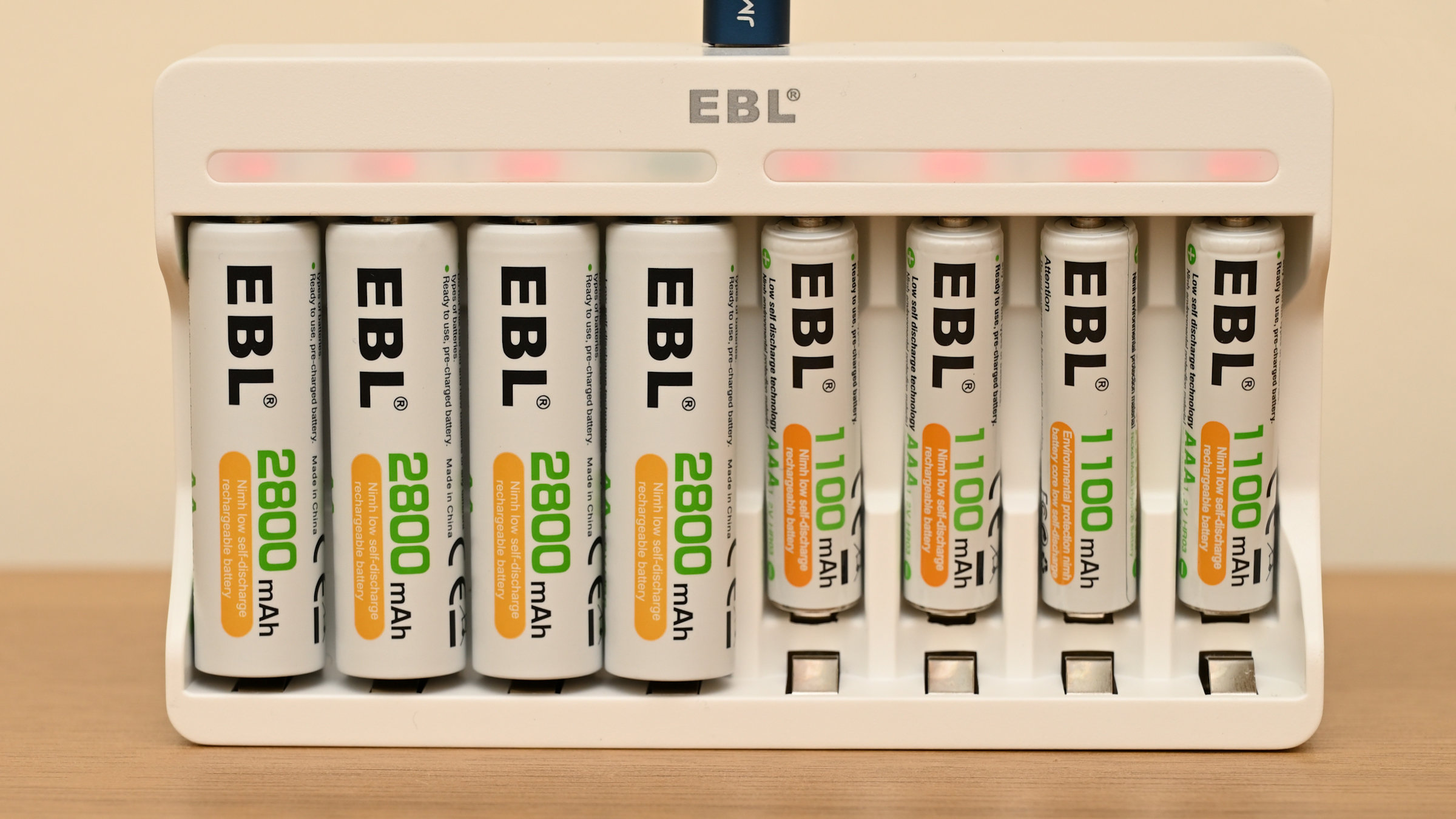
The latest generation of NiMH (Nickel-Metal Hydride) rechargeable batteries tend to have a low self-discharge rate. Why does it matter? Well, in the past, you’d often fully charge NiMH batteries only to find they’d gone flat all by themselves when you came to use them, a few weeks down the line. That’s certainly not the case with these EBL AA and AAA batteries, which are claimed to hold 80 per cent of their charge even after standing idle for three years.
Low-discharge NiMH batteries are often advertised as ‘ready to use’. That’s because the manufacturer can fully charge them at the production stage and be confident they’ll still have plenty of charge left in them after sitting around on a retailer’s shelf for ages. However, that’s not so with these EBL batteries. Claiming safety as a factor, EBL only charges them to 20% of their capacity before shipping. You can’t use them for long straight out of the box. Instead you’re better off fully charging them before first use.
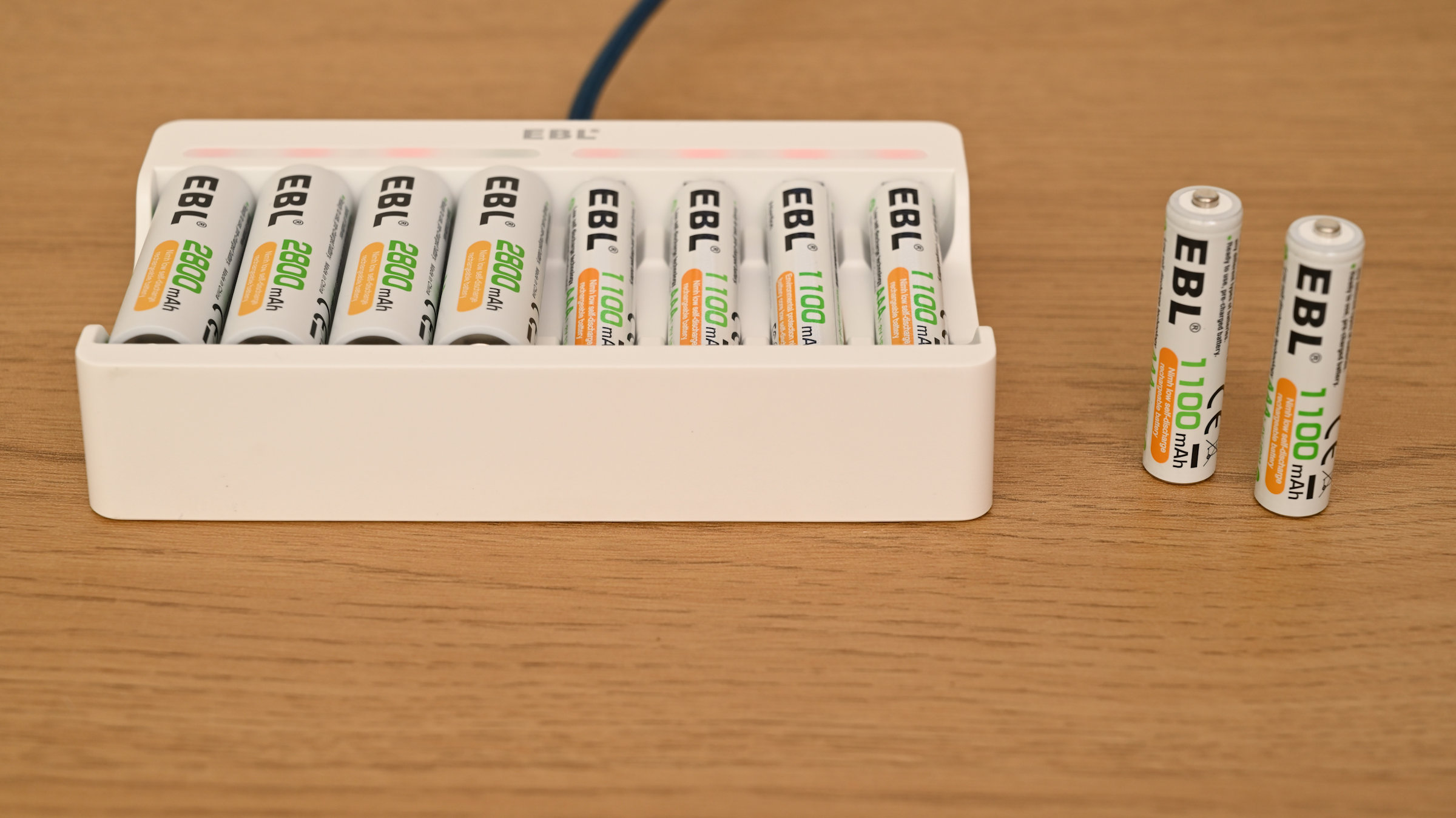
Pretty much any AA/AAA battery charger that’s designed for NiMH batteries should suffice, but we bought our batteries complete with EBLs own battery charger as a complete kit.
Specifications
Type: NiMH
Size: AA, AAA
Voltage: 1.2V
Capacity: AA 2800mAh; AAA 1100mAh
Charge held: 80% after 3 years
Recharge up to: 1200 times
Key features
It’s a bit of a fallacy that NiMH batteries don’t last as long as non-rechargeable alkaline batteries when in use. With capacities of 2800mAh (milli-Amp hours) for AA and 1100mAh for AAA, these ones easily match or exceed the capacity of most alkaline batteries of the same size. Better still, although they’re only 1.2V (Volts) rather than 1.5V to start with, NiMH batteries tend to hold a much more constant output voltage than alkaline batteries over their entire discharge period. We’ll come back to that later in our ‘performance’ section.
Some of the best NiMH batteries on the market only have a relatively limited number of times you can use and recharge them over their lifetime. For example, it’s stated as 500 times for Panasonic Eneloop Pro and around 400 times for some Duracell rechargeable batteries. These EBL batteries should last for longer overall, with a claimed maximum of 1200 charge/discharging cycles. Like all NiMH (rather than older Nickel Cadmium) batteries, there’s no ‘memory effect’, so you don’t need to fully discharge them before recharging.
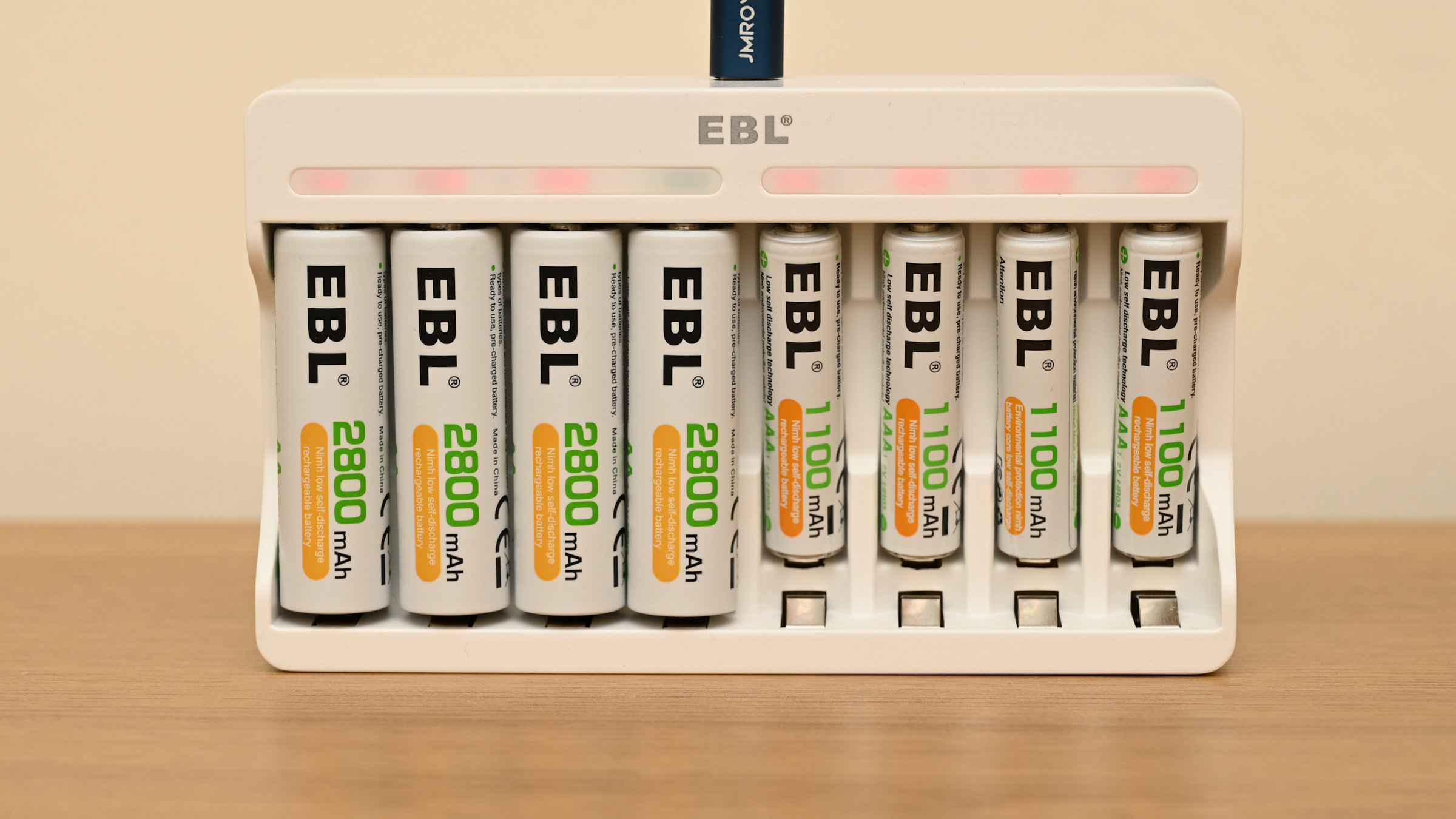
You can buy the batteries in packs of various sizes on their own, or complete with a USB-powered charger. When we bought ours, two different 8-bay chargers were available in the kits, both of which can accommodate up to eight AA or eight AAA sized batteries, or a mix of the two. However, the more basic charger can only store batteries in multiples of two. For very little extra cost, the more sophisticated charger has eight individual charging channels, so you can charge batteries in any even or odd quantity from one to eight.
For the great outdoors, these EBL batteries can operate over a very generous temperature range, from -20 to 60 degrees Celsius (-4 to 140 degrees Fahrenheit). That enables use in much colder conditions than with directly competing Powerowl Pro Goldtop AA and AAA batteries, which have the same capacity ratings and cost about the same price to buy. The Powerowl are only rated down to -5 degrees Celsius (24 degrees Fahrenheit).
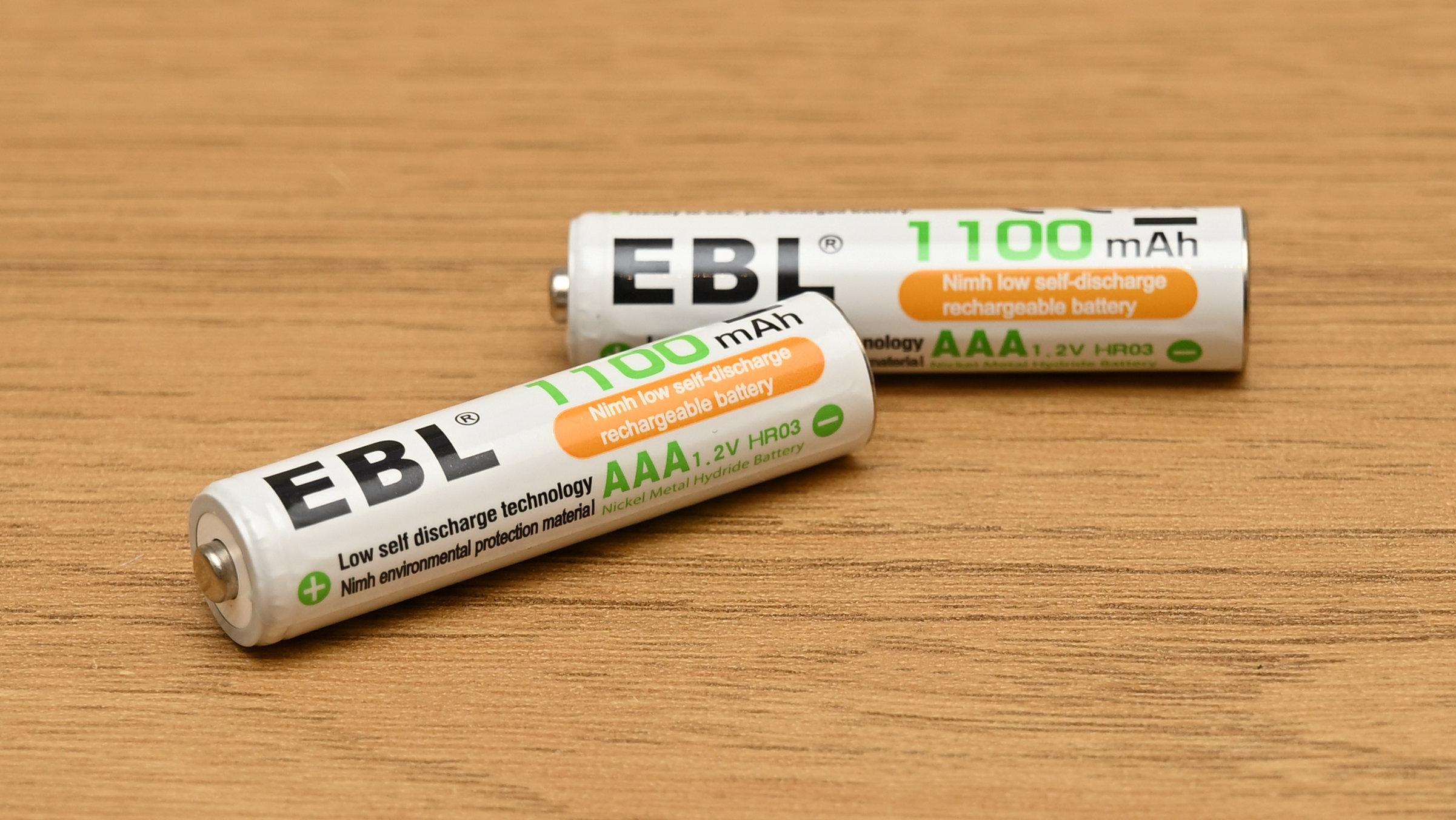
Safety features include a steel casing to resist over-pressure and avoid the risk of leakage. The design also features protection against over-charging, over-discharging, over-voltage, over-current and short-circuit. A nice touch is that the batteries are supplied in robust storage cases, taking up to eight AA or AAA batteries each.
Performance
The 2800mAh AA and 1100mAh AAA batteries that we tested are at the top of the range for capacity. EBL also sell 2300mAh and 2500mAh AA batteries, as well as 800mAh AAA batteries. Putting a fully charged EBL 1100mAh AAA battery into a high-power mini flashlight, we got 85 minutes of use, slightly more than the 80 minutes from the equivalent Powerowl Pro Goldtop, and about twice as long as when using an alkaline AAA battery.
To test the performance of AA batteries, we put a set of four into a Nikon Speedlight SB-700. On alkaline batteries, we tend to get a recycling speed of about 3 seconds after a full-power flash with fresh batteries, dropping to 6.5 seconds after 50 flashes, 9 seconds after 75 flashes, and 13 seconds after 100 flashes. That’s quite a slow-down over time and alkaline batteries tend to run flat after about 115 full-power flashes.
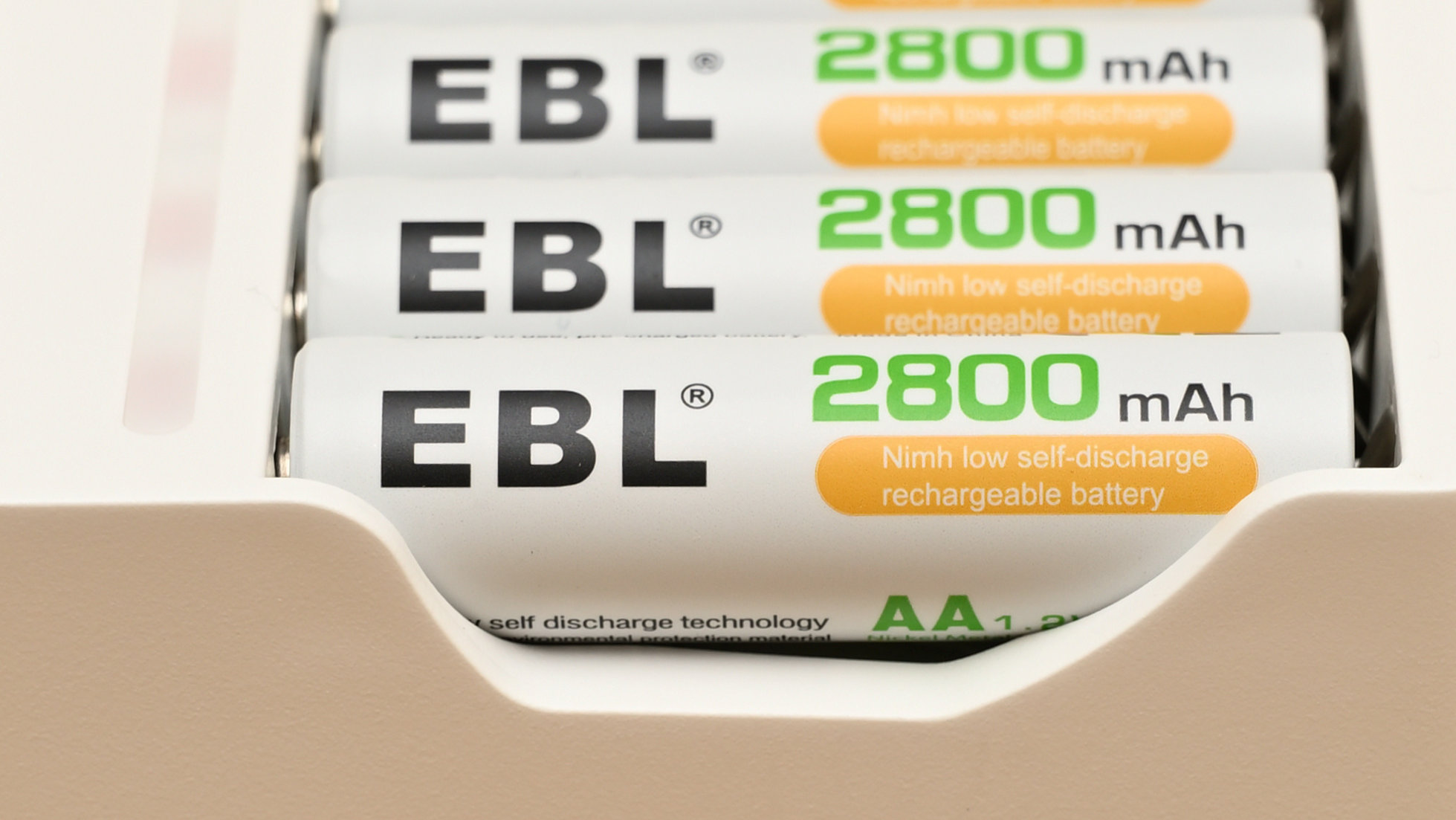
With fully charged EBL 2800mAh AA batteries, performance proved much more impressive. Throughout the entire discharge period, the recycle speed after a full-power flash in our SB-700 stayed at around 2 seconds, matching the much pricier Eneloop Pro and easing ahead of the 2.4-second Powerowl Pro Goldtop.
When it comes to staying power, the EBL AA batteries kept going for 292 full-power flashes in our SB-700, edging marginally ahead of the 285 from a set of new Powerowl Pro Goldtop. We tend to get 320 flashes from Eneloop Pro batteries that we’ve been using for a year or so, but it’s worth bearing in mind that the capacity of NiMH batteries tends to increase a bit after several charge/discharge cycles.
All in all, excellent performance, longevity of the overall lifetime with 1200 charge/discharge cycles and usability over a big temperature range make these EBL AA and AAA batteries standout value at the price. Why pay more?
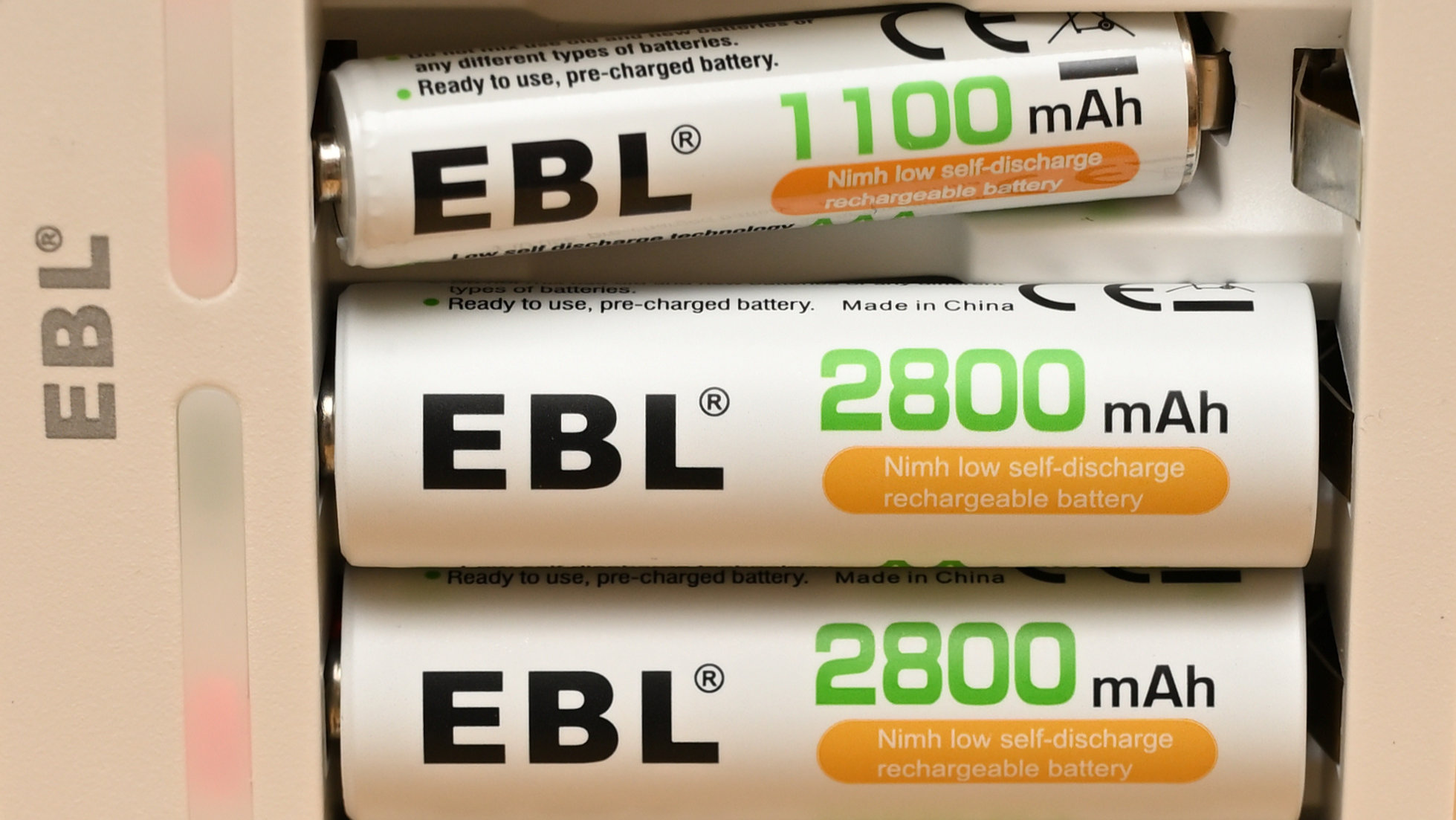
Verdict
These AA and AAA batteries from EBL tick all the right boxes on our wish list for rechargeable NiMH cells. They’re at the top end of what’s available in terms of capacity, rated at 2800mAh for the larger AA size and 1100mAh for the smaller AAA ones. Like most competitors nowadays, they have a low self-discharge rate, so they stay charged for long periods, as well as boasting a long lifespan in terms of the maximum number of charge/discharge cycles. That makes them great value at the very competitive price.
Read more:
Best AA rechargeable batteries
Best AAA rechargeable batteries
Best power strips
Best travel adapters
Best camera batteries







